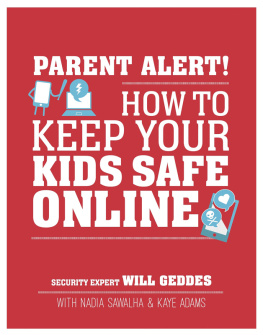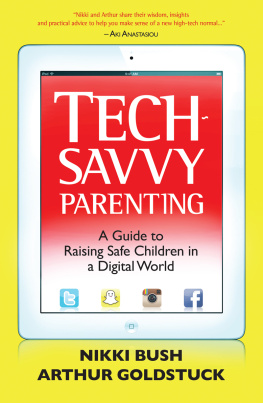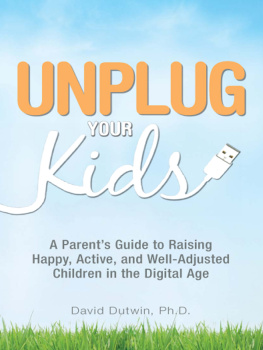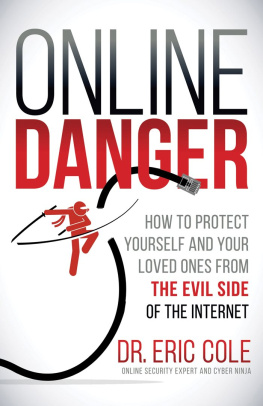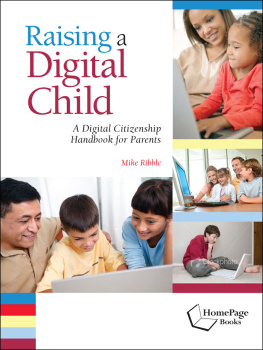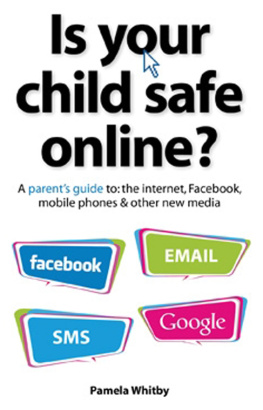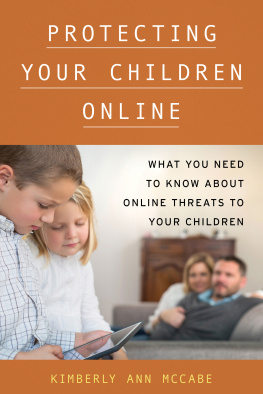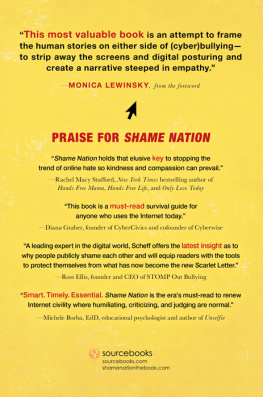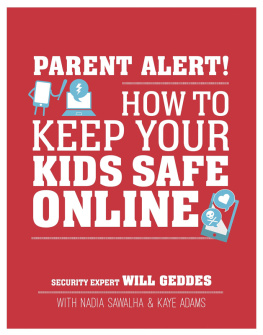TALKING TO YOUR KIDS
Starting conversations and building trust between you and your kids
CREATING A HEALTHY TECH ENVIRONMENT
Fostering a positive relationship between your kids and their devices
CHATTING ONLINE
Teaching your child about talking to strangers
SOCIAL MEDIA
What your child is viewing and posting on their favorite networking sites
CYBERBULLYING AND TROLLS
How to block and disarm online bullies
CYBERSTALKING AND TRACKING
How to keep your kids locations private
GROOMING
Protecting your child from online predators
SEXTING
The dangers of intimate texts and nude photos
PORNOGRAPHY AND VIOLENT CONTENT
Guiding kids away from extreme material online
COERCION, EXTORTION, AND BLACKMAIL
How to deal with threats and demands
ONLINE SHOPPING
How to protect your child from fakes, fraud, theft, and scams
COSMETICS, DRUGS, AND LEGAL HIGHS
The easy availability of dangerous and unregulated substances
SMART TECH AND TOYS
How to protect your smart home from hackers
YOUR CHILDS DIGITAL FOOTPRINT
The trail of personal information your child leaves on the Internet
DEVICE SAFETY AND SECURITY
Setting up devices and online accounts for maximum safety
ITS ALL GONE WRONG
When you need to call in outside help
Please Note: The information in this book has been compiled by way of general guidance in relation to the specific subjects addressed but is not a substitute and not to be relied on for legal or other professional advice on specific circumstances and in specific locations. So far as the authors are aware, the information given is correct and up to date as af the date of publication. Practice, laws, and regulations all change, and the reader should obtain up-to-date professional advice on any such issues. The authors and publishers disclaim, as far as the law allows, any liability arising directly or indirectly from the use, or misuse, of the information contained in this book.
WILLS PERSPECTIVE
The online world is evolving and expanding so rapidly on a daily basis that its highly likely some major developments have probably occurred even since I finished writing this. Which is why we need to adjust and adapt continually to this ever-changing digital and virtual landscape. The Internet is complicated enough for us adults; its even more so for our children.
Most of us probably manage our entire lives from one device: our family, friends, work, school, calls, messages, photos, videos, education, shopping, social media, entertainment, and finances. Its not a way of lifeit IS our life.
As convenient as this may be, it has blurred the line between the adult and child worlds, placing pressure on children to act like adults at an earlier age. The average child receives their first phone at the age of 11, and children as young as 3 or 4 have access to their parents tablets or laptopstools that expose them to the largely unrestricted and unmoderated world of the Internet.
The saturation of social media images that children are exposed to can give them unrealistic expectations of the real world, setting impossible standards of beauty and lifestyle. Its not uncommon for children as young as 10 or 11 to encounter pornography, too; for some, it might even be their sole form of sexual education.
Children are also exposed online to cyberbullies, cyberstalkers, and trolls and might be encouraged to send sexts or watch horrifically violent or graphic content. This can influence their perception, expectations, and understanding of others and pollute their definition of what is and isnt acceptable behavior. It may be many, many years before we see the psychological impact this exposure ultimately has on future generations.
For more than 25 years, Ive been working within the more specialist end of the security world, dealing with issues ranging from stalkers, cybercriminals, blackmail, and extortion to death threats and terrorism. On my travels, I have met and worked alongside some of the very best hackers, coders, and programmers in the world and have had the privilege of learning an awful lot from them.
When friends and clients have approached me for advice on how to keep their children safe online, its sometimes because they didnt know where else to go. The sheer quantity of information available online is overwhelming, and much of it can be of dubious trustworthiness, varying in its message, or even entirely contradictory. This can prove extremely frustrating for a panicking parent whose child has found themselves caught up in the darker parts of the web.
This book has been created as a means of filtering all that information into a format that, hopefully, even those with limited technological knowledge can understand. Its a practical and realistic take on the genuine risks children face. Some of my advice may be considered extreme, but we need to keep things in perspective: children are banned from drinking alone until age 18 in most countries, but parents in those same countries will give their children smartphones that allow unfiltered access to everything the Internet has to offer.
Have I covered everything? Possibly and probably not because, in reality, each chapter here could easily provide a whole books worth of material all by itself. But I hope our book answers many of your questions and provides some guidance and solutions to steer your child through the Internets dangerous, and often uncharted, waters.

Will Geddes
NADIA & KAYES PERSPECTIVE
What are they doing up there in their bedrooms on their phones? What are they looking at and listening to? Who are they talking to, and, more worryingly, who is talking to them? Are they being bullied? Are they being stalked? Are they being groomed? Would they be foolish enough to send compromising photos of themselves to some random person or say something that might haunt them for the rest of their lives? Will they turn out to be dysfunctional screen slaves, incapable of holding a normal conversation?
Nadia and I have these conversations all the time about our tweens and teens (four between us, aged between 10 and 15). We are not technophobes, and, to be absolutely honest, we could probably do with cutting down on our own screen time, but weve been around the block a few timesour daughters, however, are at a vulnerable age.
Weve had the chats about sex and alcohol and drugs and all the dangers that might arise from them, but at least we vaguely know what we are talking about in those departments. When it comes to the online world, we feel hopelessly naive and are struggling to keep up.
It was back in early summer 2017 that a major alarm bell went off. It was not long after Snapchat, the site most beloved of our older girls, introduced a new feature called Snap Map, which gives users the capability to track their friends whereabouts in real time.

